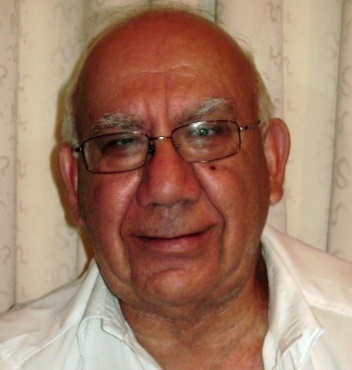click to dowload our latest edition
CLICK HERE TO SUBSCRIBE TO OUR NEWSLETTER


Published
9 years agoon
By
adminAUBREY KATZEF
The reason for this was that Yair Lapid’s Yesh Atid surprised and won 19 seats becoming a major role player. This time I waited for the results before I wrote this article and, just as well, because there was again a major surprise.
A day before the election, the polls were showing that a gap of five seats has opened up between the Zionist Camp (Labour + Tzipi Livni) and Likud .The media had reported that Likud were panicking. At the time I thought that this was a blessing in disguise as it would galvanise the Likud supporters to get out and vote. After all, who on the right would want to be governed by a left-wing government?
 I personally did not share the view that the Zionist camp would be the largest party and my reason was simple. The polls reflected the Zionist Camp gaining about 4/6 extra seats but from whom? For me, they could only gain from Meretz and Yesh Atid. They were unlikely to gain from the right wing and religious parties. So let’s look at the gainers and losers.
I personally did not share the view that the Zionist camp would be the largest party and my reason was simple. The polls reflected the Zionist Camp gaining about 4/6 extra seats but from whom? For me, they could only gain from Meretz and Yesh Atid. They were unlikely to gain from the right wing and religious parties. So let’s look at the gainers and losers.
RIGHT: Aubrey Katzef’s Monday predictions and explanations thereof
Firstly we need to look at the various groupings.
The Zionist camp would have had to gain their extra 4 to 6 seats from either the left or the centre. Meretz were predicted to retain their 6 seats unless their voters believed that it would be better to support a larger left wing party. That is exactly what happened and they only received 5 seats. This occurred in the past when Meretz voters supported Kadimah to avoid Likud becoming the bigger party. In that election they won only 3 seats. Yesh Atid, which I expected to lose, 8 seats did. These seats did not go to the Zionist camp but to Kahlan’s Kulana party.
In the Centre, is the new party Kulanu, headed by the former Likud cabinet minister Moshe Kahlon. They were expected to obtain 8 seats but did even better and got 10 seats. The extra votes may have come from disaffected Likud and Yisrael Beiteinu voters or from the now defunct Kadima party. As mentioned in a previous article, many of the centre voters are unhappy with Yair Lapid, the leader of Yesh Atid. During his short spell as Minister of Finance, he failed to deliver on his election promises. His party received 11 seats, meaning a loss of 8 seats, and they more than likely voted for Kahlon. Kahlon, when he was the Minister of Communications, broke up the cell phone cartels and as a result, cell phone charges in Israel were dramatically reduced and thus his popularity. Voters will be looking forward to Kahlan carrying out his promises to bring down the cost of living.
Let’s look at the right wing gains and losses. Lieberman’s Yisrael Beiteinu lost 7 seats mostly going to Likud. Habayit Hayehudi, I thought, would gain a seat or two but the events of the day proved me wrong and it ended up with 8 seats and a loss of 4.
Likud, of course, was the big winner. Going in to the election with 18 seats they gained 12.
As I predicted, Israel’s Arab voters turned out in greater numbers to support their joint list. Unlike other joint lists, this proved attractive to Israeli Arabs and instead of having three insignificant parties, they now have the third largest party in the Knesset. They increased their representation from 11 to 13 seats.
The results are (with my predictions in brackets):
Netanyahu can now put together a right wing and religious coalition consisting of 67 (65) seats with a left and centre opposition of 40 (42) and Arab parties of 13 (13). The left cannot put together a coalition even if they can enlist the Arab Joint List. This would leave them with 53 seats and I don’t see the other parties joining them.
So how did Bibi Netanyahu pull it off? This was vintage Bibi. He took advantage of the polls which reflected his four to six seats behind Herzog/Livni. Most of the newspapers, especially Haaretz and Yidid Ahranot, had spent the last three months spreading the word how Bibi, his wife and his party were not only bad but especially bad for Israel.
At the last moment Bibi went on the attack and as he was unlikely to attract left wing voters or the centrists, he put out an appeal to the right wing voters: back Likud or the Zionist Camp will become the biggest party and have the first shot at forming a coalition.
The right-wing voters reacted and abandoned support for their own parties and in the last few hours of polling swarmed to vote for Likud.
In the last election, Likud attacked Bayit Yehudi. In this election they refrained from doing so as they now see Bayit Yehudi as a natural partner but they still needed their votes and they got a large number of them to switch to them. Despite the loss of four seats, Bennett, Bayit Ye’hudi’s leader, accepts that it was necessary.
For Bennett the polls cost him dearly. With the Zionist Camp not doing as well as predicted, it was not necessary for the switch to ensure that Likud would turn out to be the largest party.
The press which ran a campaign of villification of Netanyahu was perhaps the biggest loser of all.
Their campaign “Anyone but Bibi” failed and Likud increased its seats from 18 to 30. This means that Likud will hold many more posts in the cabinet and it will be a Likud government rather than a Likud-led government.
Will the government last its term of four years? Who knows?
A day – as we have seen – is a long time in Israeli politics.
Related reads on SAJR Online
